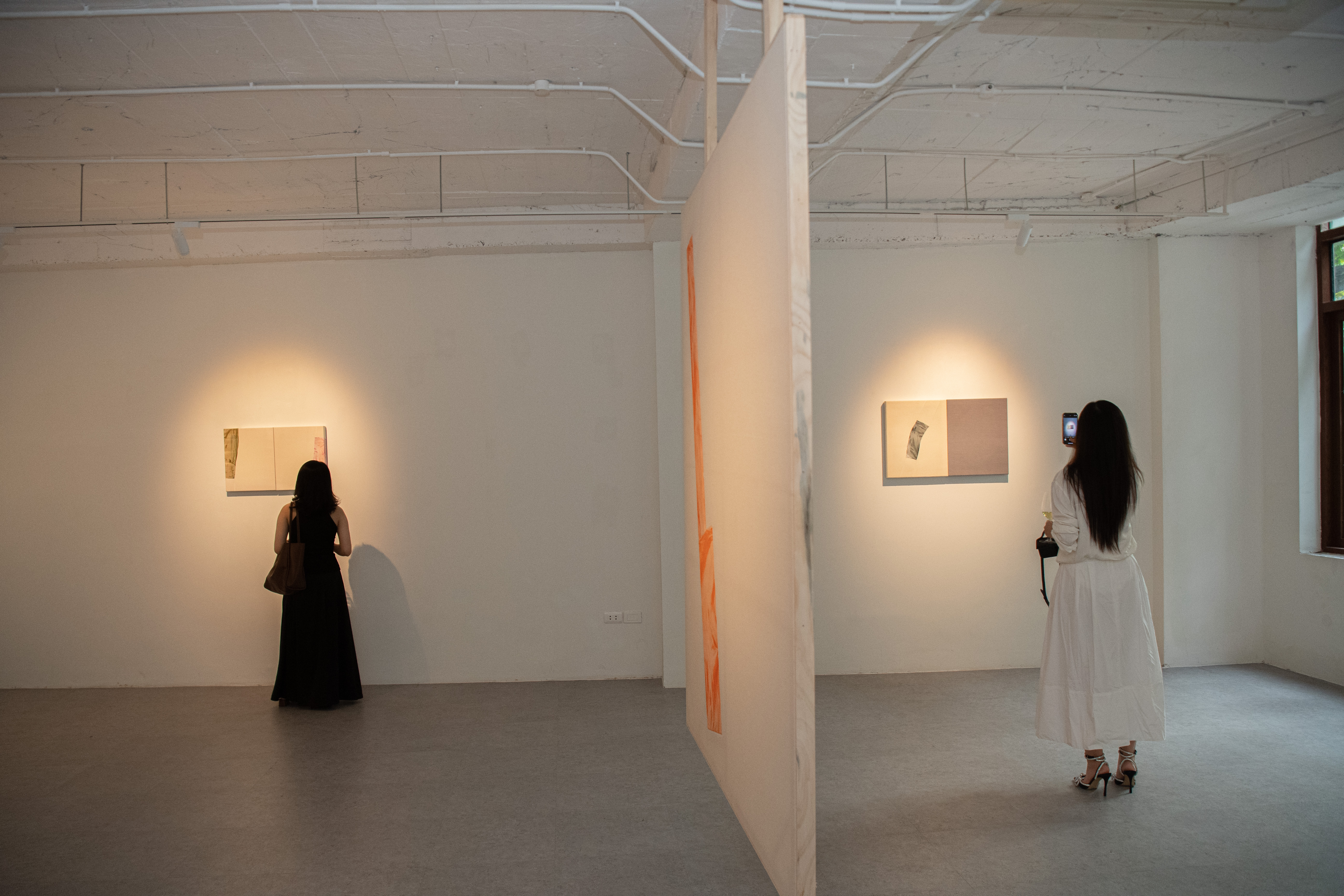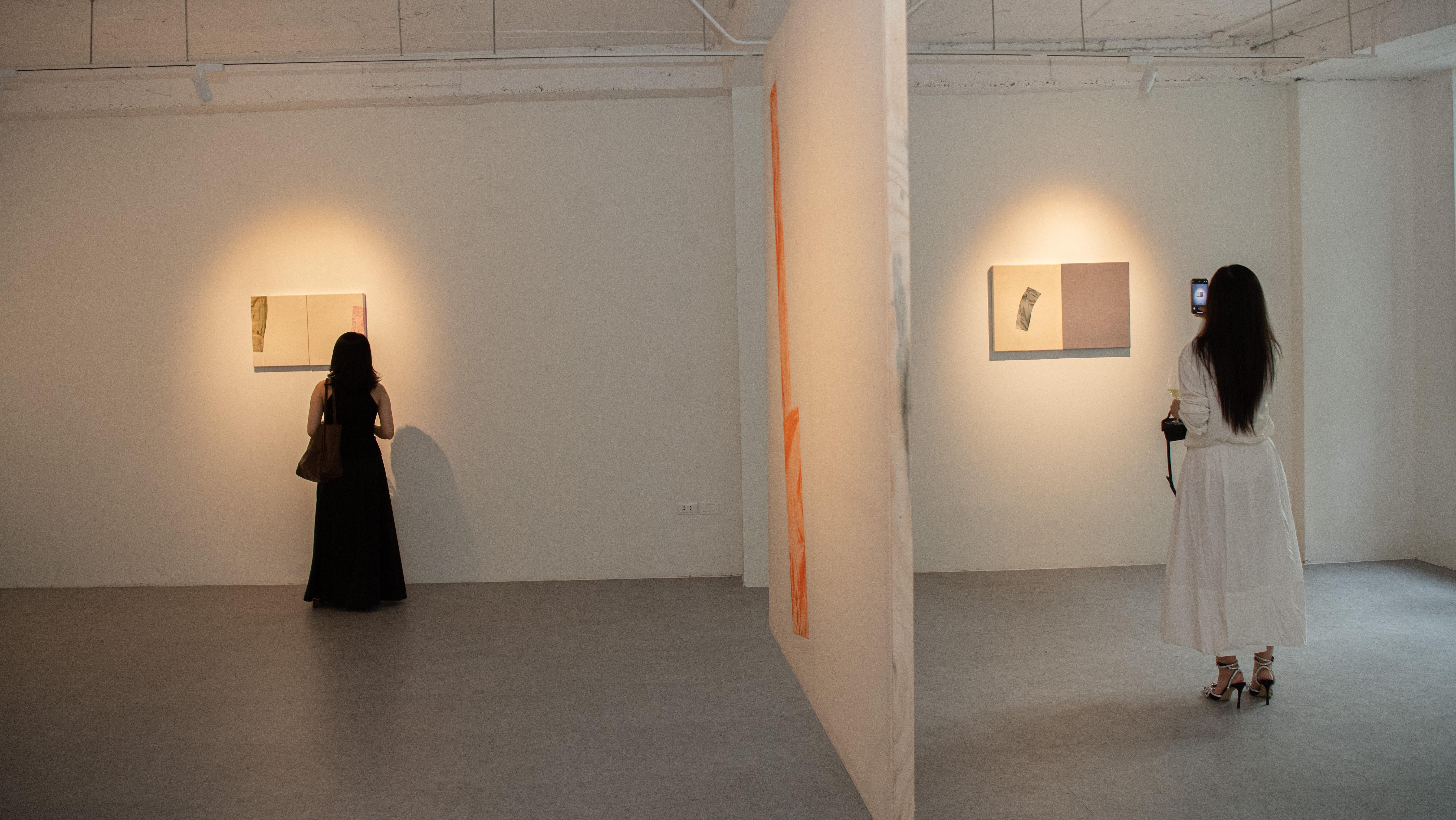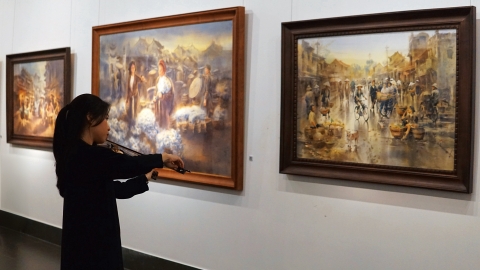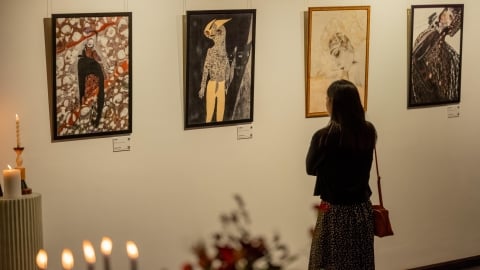Vu Minh Dung's (artist name Minh Dung Vu) exploration of identity through traditional Vietnamese values has shaped his solo exhibition "Around the White Road", marking his first exhibition in Vietnam.
Vu Minh Dung’s childhood was filled with traditional sounds such as Chau Van – a type of Vietnamese folk music used in spiritual rituals of the Mother Goddess religion – and his grandmother sewing in the coastal province of Quang Ninh. These memories became the foundation for his art, a blend of personal nostalgia and history.
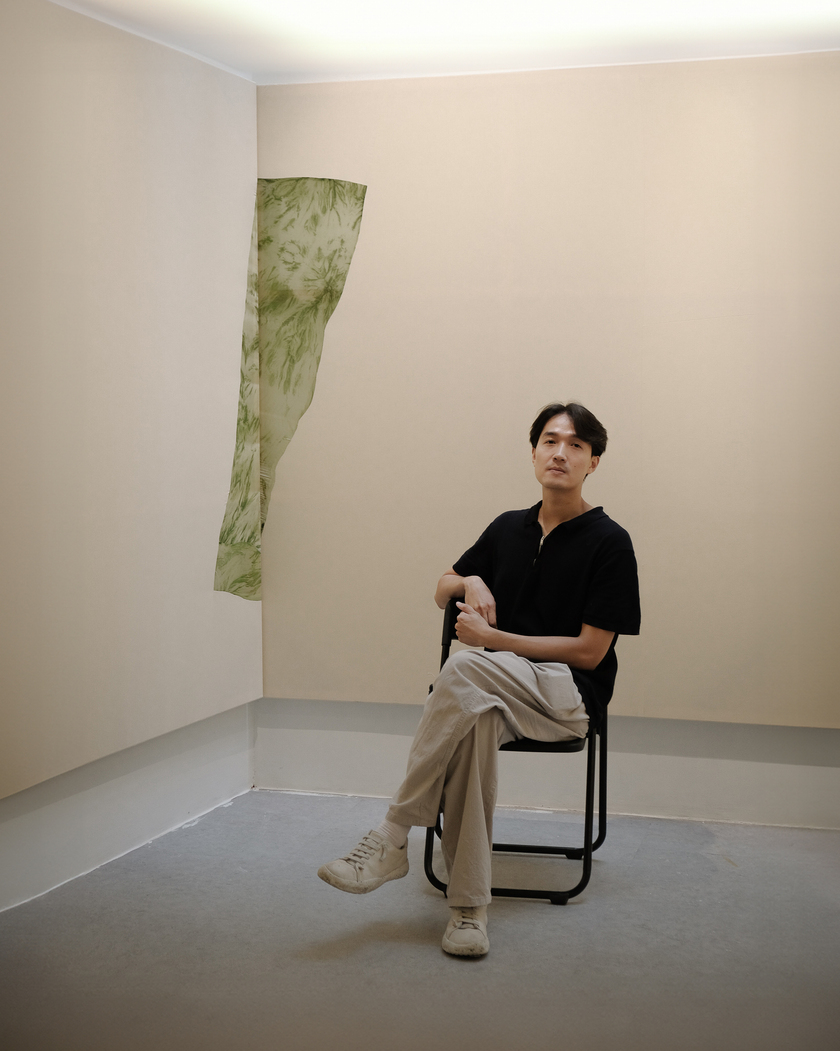
Artist Vu Minh Dung (stage name Minh Dung Vu)
His journey of migration and separation from his homeland has had a profound impact on Dung’s artistic practice. After moving to Germany at the age of 19, he found fabric to be a means of reconnecting with his Vietnamese roots, while also redefining himself in a new cultural context. His seminal works such as Green XXI, Green XXII and Green XXIII express this tension, with soft layers of fabric stretching across the canvas surface, challenging traditional notions of two-dimensional art.
During a visit to Bridget Riley’s vast, white studio in London in 2018, Vu Minh Dung felt his breath echoing. Also during his encounter with Gate Gate Gallery, he was impressed by the unique curved architecture there. These moments stimulated his creative process, leading him to create his work “Around the White Road”. Dung’s “Around the White Road” evokes a sense of absence by using empty space or creating ambiguous images, making the viewer feel as if they are facing the absence of an object or event that they themselves can imagine.

From a distance, Dung's fabric works look like abstract field paintings, but upon closer inspection, they reveal complex depth.
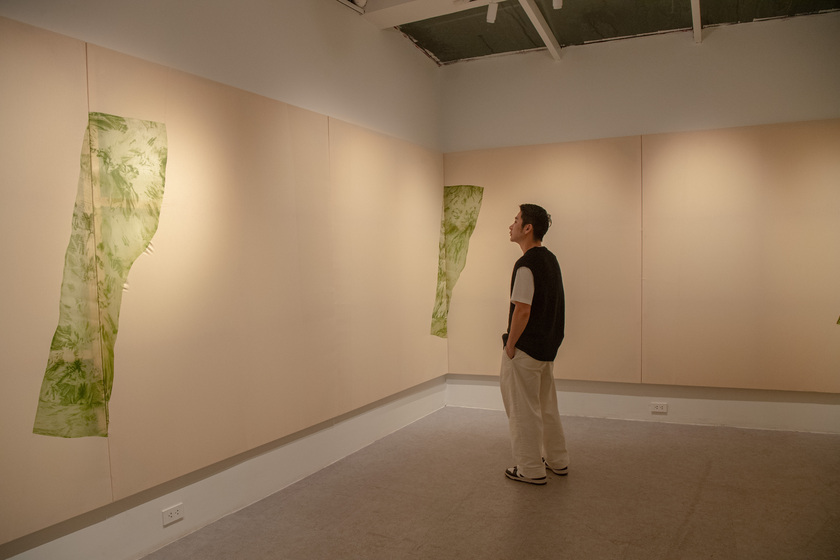

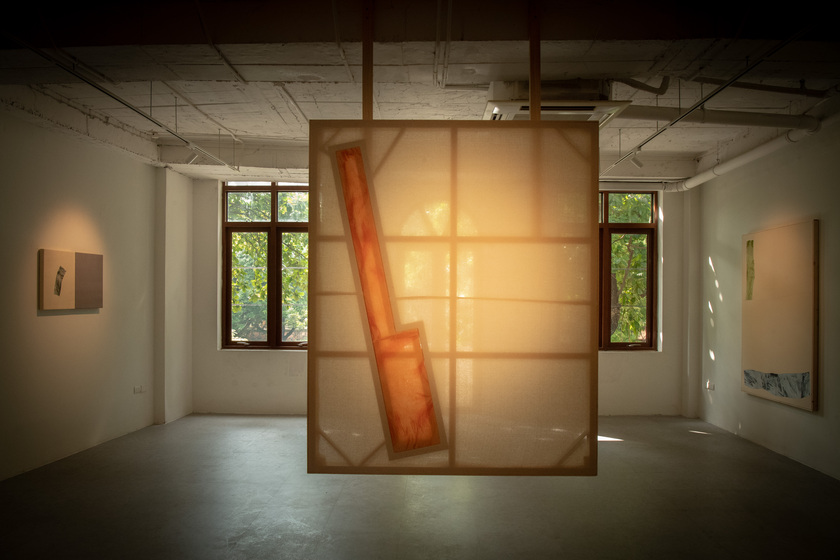
The use of fabric carries cultural significance and becomes a means of exploring movement and memory, emphasizing direct interaction with the material on the work rather than through the brush.
Over the years, Vu Minh Dung has created a body of work characterized by textile surfaces, shifting colors, and organic forms. A move to Germany has encouraged Dung to work with textiles and to stay connected to traditions such as Vietnamese tailoring, while also challenging the viewer’s perception of scale and dimension. A consistent theme emerges in his recent works: large, minimalist compositions, often featuring a single fabric element against a neutral background. These works convey a story about culture, history, and the environment through their materials and forms rather than a clear traditional image.
His creative process begins with conceptualizing and sketching out details, then selecting materials, primarily silk, linen or chiffon, and creating custom dye mixtures using different color paints or indigo. When stretching the fabric onto the frame, Dung acts as a connector rather than a controller, allowing the material to somewhat dictate its final form while it dries before being stitched to the frame.
Summarizing his philosophy on copyright, Vu Minh Dung said: "I think I can only control 50% of the practice process, the rest is up to the work itself."
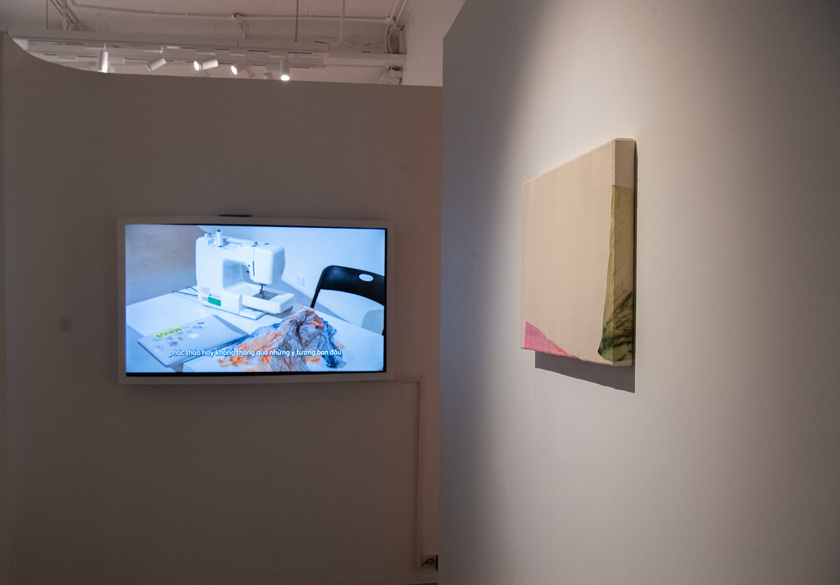
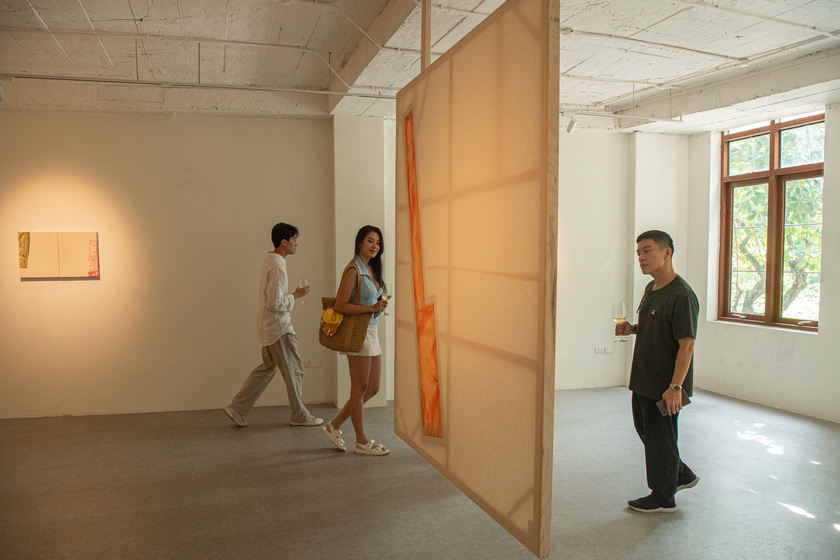
Vu Minh Dung's artistic practice can be called art constructed by context and location.
Vu Minh Dung's artistic practice can be called site-specific art, originating from the changes in the global art scene in the 1960s, with a focus on immaterial art and conceptual art.
This practice is also closely linked to the avant-garde art of post-colonial Vietnam. By combining the two, he creates a negotiation between indigenous craft traditions and international art movements. The use of fabric carries cultural significance and becomes a means of exploring displacement and memory, emphasizing direct interaction with the material on the work rather than through the brush. Dung connects the dialogue between East and West, where the ceding of control in the creative process symbolizes the fluidity of identity and cultural fusion in the trend of globalization.


The interaction between fabric and architecture, combined with the continuous installation of works, creates a unified experience.
“When I feel homesick, I watch documentaries about Vietnamese history. I once read a research paper on the history of the Nguyen Dynasty and the book Vietnamese Customs by Phan Ke Binh. I researched Vietnamese history, read about old family and clan stories, Chau Van music and spiritual chants of the Mother Goddess religion. These times of research helped me overcome homesickness and no longer feel lost in a strange place.
During Tet, I lit an incense stick, and as the scent lingered, it lingered, and evoked emotions that reminded me of my days in Vietnam. I asked myself: How can I step out of the boundaries of what I had been trained in, such as drawing techniques? When I was there, I did not dare to do anything new. I wondered what method or form of expression to choose, and at this time I thought of the past and my childhood with my grandmother. The memory of her, along with the image of her sitting and sewing with a box of needles and threads that had been stained by time, became the starting point to create a collection of works that considered the meaning of using fabric as a material, connecting my art to my personal historical roots and cultural identity," said artist Vu Minh Dung.
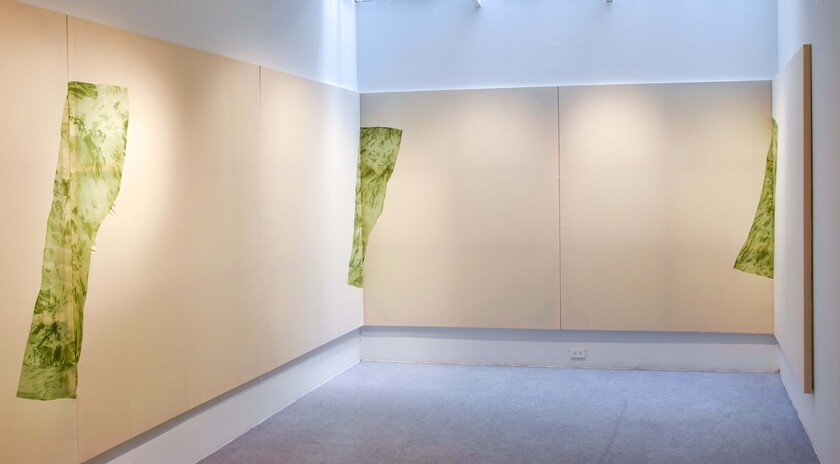
Works Green XXI, Green XXII, and Green XXIII
The exhibition begins outside the gallery with Echo from the Lake, created especially for the exhibition by Dung. Two floor-to-ceiling canvases, largely covered in orange-dyed fabric, face glass, creating a multi-layered experience for the viewer both inside and out. The work evokes traditional Vietnamese architecture with its interconnected indoor and outdoor areas and is a modern interpretation of this architectural style. The outdoor light casts shadows across the surface of the work, altering the viewer’s perception of depth, material, color, and form. As the visitor moves from outside to inside, the work anticipates the exhibition’s recurring themes of the distinction between object and environment.
The exhibition’s focal works, Green XXI, Green XXII, and Green XXIII, each feature two silk panels seamlessly joined together, the textured green fabric flowing across the canvases, contrasting the soft, irregular shapes with the solid structures beneath. These works challenge one-dimensional painting, harking back to traditional silk painting while pushing it into the realms of modern sculpture.
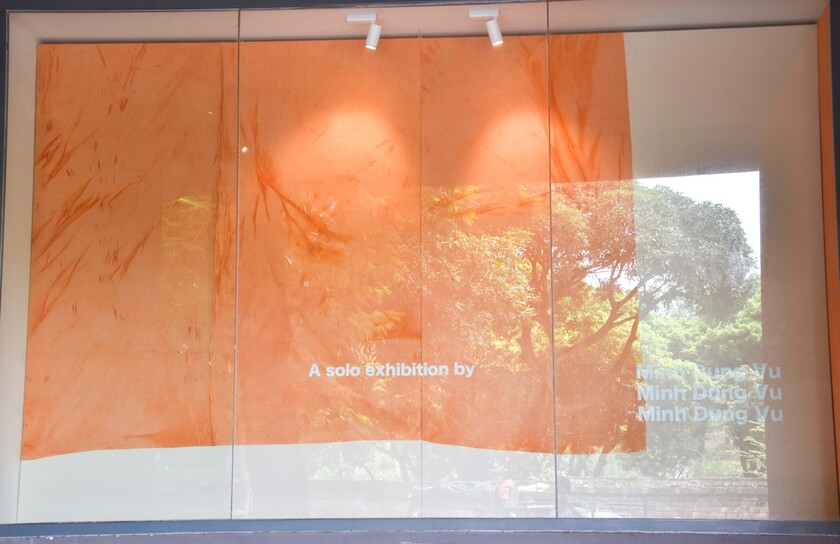
Echo from the Lake (2024)
The interplay between fabric and architecture, combined with the continuous installation of the works, creates a unified experience reminiscent of the open layouts of traditional Vietnamese houses. As viewers move through this vast work, their shifting perspectives mirror Dung’s exploration of cultural duality, reflecting not only his geographical mobility but also the cultural and emotional shifts that come with being exposed to different traditions and artistic environments.
The exhibition concludes on the second floor, where a minimalist work dominates the space. Its raw surface is punctuated by a striking strip of orange fabric that cuts diagonally across the composition, creating a powerful visual tension between absence and presence. The work, suspended from the ceiling by wooden brackets, hovers in dialogue with the room’s raw industrial aesthetic – exposed air ducts, concrete floors, and white walls blend to frame the work as both an object and an intervention in the space.
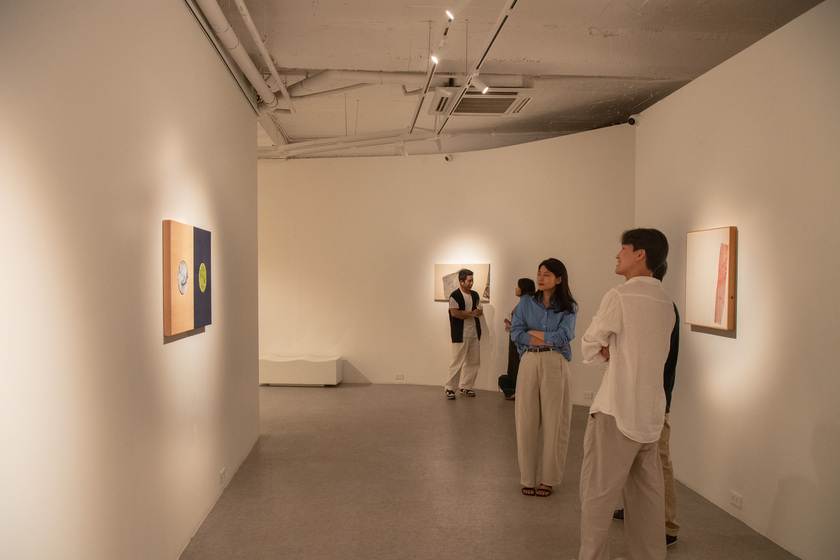
This is an opportunity for the art-loving public to deeply explore the personal history of artist Vu Minh Dung and the broader cultural context of Vietnam.
From a distance, Dung’s textile works appear to be abstract field paintings, but upon closer inspection, they reveal complex depths where tones and organic shapes reflect both geographical landscapes, history, and memories. His presentation challenges the limits of a single-dimensional canvas, combining elements of painting, sculpture, and architecture. Minh Dung Vu not only marks an important milestone in his career, but also contributes to the current discourse on cultural hybridity in contemporary Vietnamese art, providing an insight into the transitional spaces that artists navigate between cultures across the globe.
The exhibition "Around the White Road" is running at Gate Gate Gallery until October 16, 2024, 55 Van Mieu, Dong Da, Hanoi.





